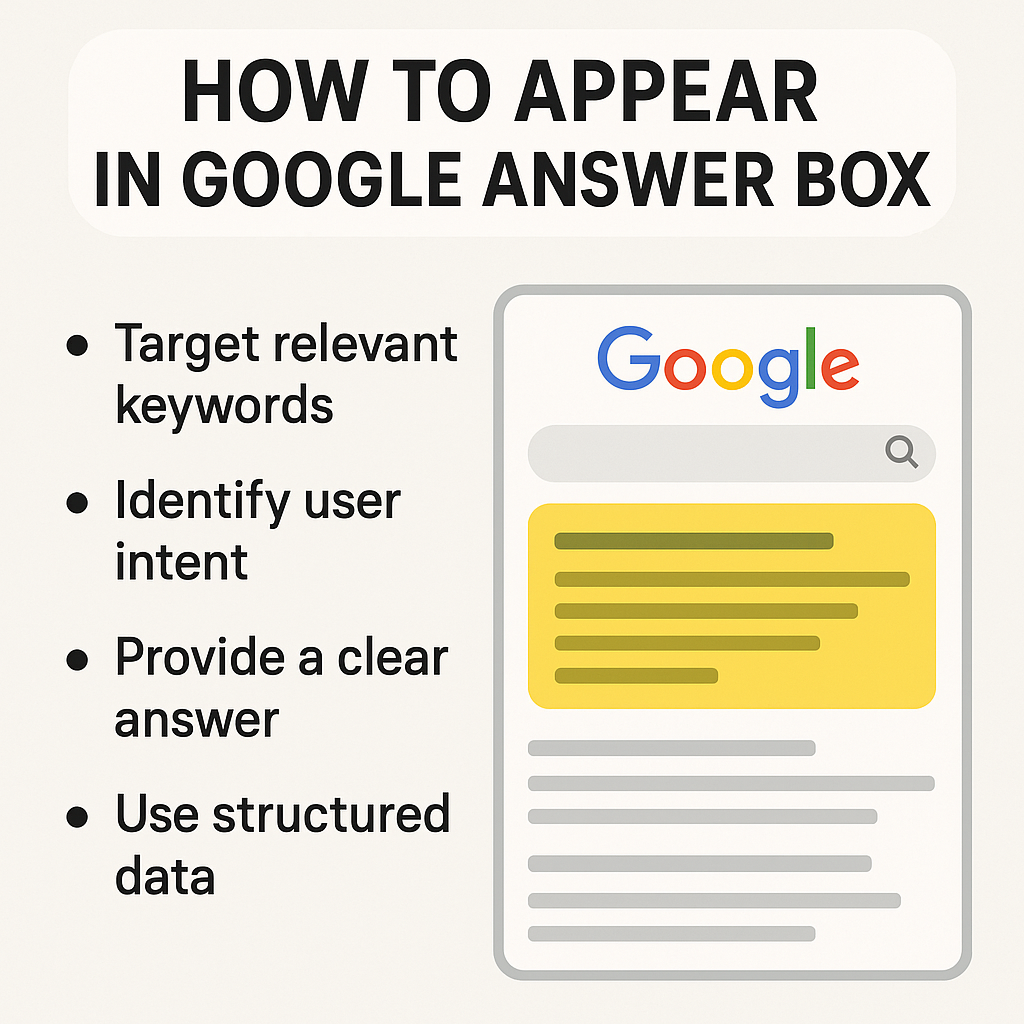If you’ve ever searched for something on Google and found your question answered right at the top—without even needing to click a website—you’ve seen the Google Answer Box in action. Also known as the Featured Snippet, this high-profile real estate is a powerful traffic magnet. For businesses aiming to boost visibility and credibility online, showing up in the Answer Box is like winning the lottery of organic search.
At Speed Dot 360, we help clients optimize their websites for smarter search performance. Appearing in that coveted box requires a combination of technical SEO, strategic content, and the kind of optimization that goes beyond basic keyword stuffing. In fact, our approach blends SEO optimization services, targeted on-page SEO strategies, and well-planned off-page SEO solutions to position content where it matters most—at the very top.
But how exactly does your site land there? And what can you do differently to beat your competition to it?
Let’s unpack what it takes to own the Answer Box.
Understanding How the Google Answer Box Works
The Answer Box is designed to quickly provide searchers with concise, accurate information pulled from a relevant web page. Google selects these featured snippets based on how well a piece of content answers a specific query. Rather than being a separate feature you can pay for, it’s entirely earned through search engine trust, structure, and quality.
The box can be shown in different formats—paragraphs, lists, tables, or even videos—but the goal is always the same: deliver an immediate answer. Google pulls this data from existing pages in its index, often those that are already ranking on the first page.
So the first rule of the Answer Box is this: if your page isn’t already ranking in the top 10, it’s unlikely to be featured. That’s where smart SEO planning enters the scene.
Start with Intent-Driven Keyword Research
One of the biggest missteps businesses make is targeting the wrong keywords. If your content isn’t aligning with question-based or informational search intent, it’s unlikely to be featured in a snippet.
The key is to identify queries people are already asking—and that Google is already answering with a snippet. This is where keyword research services become essential. By using tools like Ahrefs, SEMrush, or even Google’s “People also ask” feature, we can identify opportunities where your content can directly challenge existing featured results.
Rather than focusing on high-volume head terms, target long-tail keywords framed as questions. Think along the lines of “how to optimize images for SEO” or “what is responsive web design.” These are the kinds of queries that Google loves to reward with an Answer Box.
Content Formatting That Speaks to Google
Even the most useful content won’t land in the Answer Box if it’s not formatted in a way that Google can easily understand. This is why page structure is more important than ever.
Headers should be used not just for aesthetics but to clearly signal the topic of each section. For example, if your keyword is “how to clean a DSLR camera,” you might include a heading like “Step-by-Step Guide to Cleaning a DSLR Camera” and follow it with a brief paragraph that answers the query concisely.
Ideally, your answer should come within the first 100 words of that section, presented in clear, straightforward language. If the content calls for it, include numbered steps or shortlists, but the point is to get to the answer quickly. Google isn’t looking for creative writing—it wants clarity and structure.
This is where on-page SEO strategies shine. Proper use of heading tags (H2, H3), schema markup, and accessible formatting make it easier for Google’s crawlers to lift your content and display it in the snippet.
Write for Humans, But Optimize for Search Engines
Many brands fall into the trap of writing strictly for algorithms. However, the secret to snippet success lies in writing content that performs well for both search engines and human readers. That means being informative without being robotic and educational without overwhelming your audience.
The sweet spot lies in a balance: conversational tone, helpful insights, and keyword relevance. Each section of your content should be self-contained enough that it can stand on its own because Google is rarely quoting entire articles. It’s selecting tight excerpts that directly answer a question.
If your content meanders, gets buried in long intros or requires scrolling to find an answer, it’s less likely to be considered. That’s why working with a team that provides professional SEO optimization services can help streamline your copy for both performance and readability.
Build Authority Beyond the Page
It’s easy to forget that off-site signals still influence your chances of earning a featured snippet. While Google doesn’t just hand out Answer Boxes to whoever has the most backlinks, domain authority certainly plays a role.
If your website has earned high-quality backlinks, positive brand mentions, and strong engagement signals, you’ll appear more trustworthy to Google’s algorithm. This makes it more likely that your content will be chosen for special features like snippets.
This is where off-page SEO solutions come into play. Link-building, guest blogging, digital PR, and consistent citation across the web all contribute to the overall authority of your domain.
Think of it this way: Google wants to surface the most reliable source. So even if your content is better structured than a competitor’s, if their domain carries more authority, they’ll probably win the snippet—unless you take steps to even the playing field.
Leverage the FAQ Section
An often-overlooked tactic is embedding a dedicated FAQ section into your blog posts or landing pages. When you frame questions using headers and immediately answer them below, you’re practically handing Google the content it wants to feature.
It also helps you organically target several queries within one page. For example, a blog post on SEO basics might include sub-questions like “What is on-page SEO?” or “Why is keyword research important for SEO?” Each of these can serve as standalone opportunities to appear in Google’s Answer Box.
Moreover, incorporating structured data (FAQ schema) improves your chances of getting rich results—especially on mobile, where visual clarity is critical. It’s a relatively easy way to enhance the SEO value of a single piece of content.
Keep It Updated
Another major factor that determines Answer Box placement is content freshness. Google doesn’t want to serve outdated information, especially in fast-moving industries like tech, marketing, or healthcare.
That means your content should be reviewed and updated regularly. Revisit older pages that once performed well and revise them with updated data, clearer formatting, and newer insights.
This ongoing optimization process is a pillar of most SEO optimization services, and it ensures that your content continues to compete for top spots even as the algorithm evolves.
Last Words
Getting into Google’s Answer Box isn’t a game of chance—it’s the result of smart strategy, technical precision, and content that genuinely serves the searcher’s intent.
It requires deep research, crisp formatting, topical authority, and consistent SEO hygiene. Most importantly, it demands a commitment to making your content visible and of utmost value.
At Speed Dot 360, we help brands like yours implement proven SEO strategies that go beyond ranking—we aim to lead the search results.





